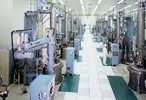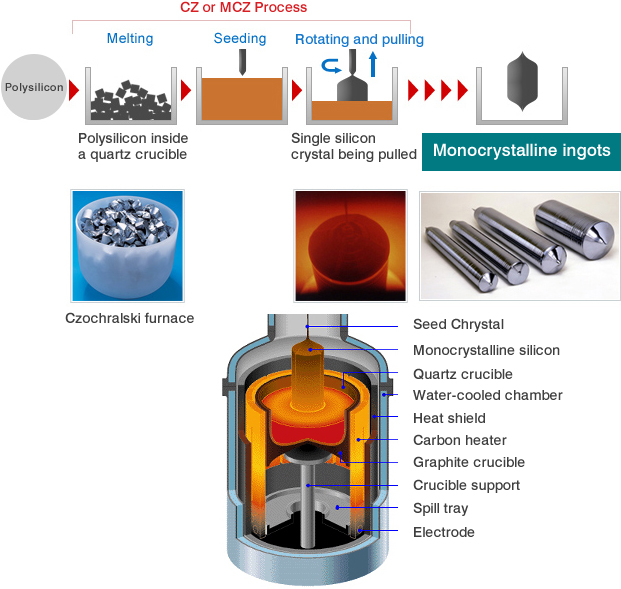 Monocrystalline pulling process
Monocrystalline pulling process
Manufacturing of monocrystalline ingots used as the material of silicon wafers
The monocrystalline ingots that make up the silicon wafer are manufactured using high-quality polysilicon as the raw material.
Flow of CZ process for making monocrystalline ingot

The monocrystalline silicon ingots from which silicon wafers are created are manufactured by a technique called the CZ (Czochralski) crystal growth process.
Polysilicon purified until the metal impurities are no more than a few parts per billion (ppb) is put into a quartz crucible along with boron (B) and phosphorous (P), and melted at a temperature of around 1420℃. The boron and phosphorous impurities are added in minute amounts to adjust the electrical resistance of the final semiconductors, determining their properties.
A seed crystal silicon rod is placed on the surface of the molten silicon in the crucible, and is pulled up while rotating it, to form a monocrystalline ingot having the same orientation of atoms as the seed crystal.
Other processes can be used on request
In response to customer needs, we also make use of the MCZ (Magnetic field applied Czochralski) technique, applying a strong magnetic field, or the FZ (Float-Zone) technique whereby monocrystalline ingots are made at low oxygen levels without using a quartz crucible. SUMCO is able to meet customer requests at the monocrystalline ingot manufacturing stage.

